After big gains on Friday, stocks gave it back with big losses on Monday. A shallow pullback on modest breadth would have been positive, but yesterday's decline did not fit that bill. All nine sectors were lower, declines out numbered advances 4 to 1 and declining volume swamped advancing volume (5 to 1 on the Nasdaq and 13 to 1 on the NYSE. Financials, retailers and semis led the way down. In short, the technical evidence remains bearish. It is still possible that SPY is in the early stages of forming the right shoulder of an inverse head-and-shoulders pattern. "Early" remains the key word here. A falling channel has taken shape the last 3-4 weeks with a sharp decline. With yesterday's decline, SPY affirmed first resistance at 107.10. It would take a convincing break above this level to argue for a reaction low and the formation of the right shoulder. Until such a break, the trend remains down and lower prices are expected.
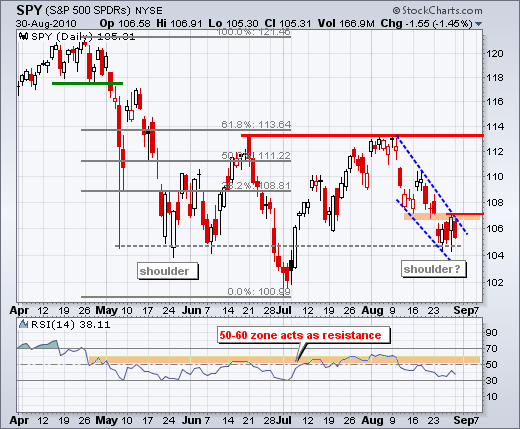

The 60-minute chart focuses on the falling channel and resistance at 107.10. Resistance here is confirmed by the mid August trendline, broken support and last week's gap. The 50-60 zone in RSI also marks momentum resistance in a downtrend. These resistance levels held with Monday's decline. I can now lower key short-term resistance to 107.10. A breakout in SPY and an RSI break above 60 would reverse this short-term downtrend.
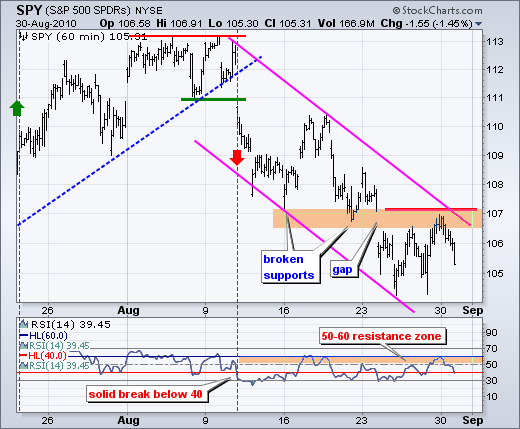
It is one full week on the economic reporting front. The fireworks start on Tuesday with the Chicago PMI, Consumer Confidence and FOMC minutes. Consensus for Chicago PMI is 56. Anything below 55 would be negative. Wednesday features the ISM Manufacturing Index. Consensus is 53 and anything less would be negative. The market could be hit hard if either or both fall below 50, which would favor economic contraction. I do not expect that though. The European Central Bank makes its interest rate decision and policy statement on Thursday, which will affect the Euro. Friday is the big day with ISM Services (consensus 53) and non-farm payrolls (consensus -80,000). We can basically watch the trend for these reports as the week unfolds. Better-than-expected numbers could buoy the bulls, but worse-than-expected numbers would likely bring out the sellers as chances of a double dip increase.
Key Economic Reports:
Tue - Aug 31 - 09:00 - Case-Shiller Housing Price Index
Tue - Aug 31 - 09:45 - Chicago PMI
Tue - Aug 31 - 10:00 - Consumer Confidence
Tue - Aug 31 - 14:00 - FOMC Meeting Minutes
Wed - Sep 01 - 08:15 - ADP Employment Report
Wed - Sep 01 - 10:00 - Construction Spending
Wed - Sep 01 - 10:00 - ISM Index
Wed - Sep 01 - 10:30 - Oil Inventories
Wed - Sep 01 - 14:00 - Auto-Truck Sales
Thu - Sep 02 - 07:45 - European Central Bank Policy Statement
Thu - Sep 02 - 08:30 - Initial Claims
Thu - Sep 02 - 10:00 - Factory Orders
Thu - Sep 02 - 10:00 - Pending Home Sales
Fri - Sep 03 - 08:30 - Employment Report
Fri - Sep 03 - 10:00 - ISM Services
Charts of Interest: APD, CHRW, CLF, DRI, GTIV, LTD, MRK, PFE
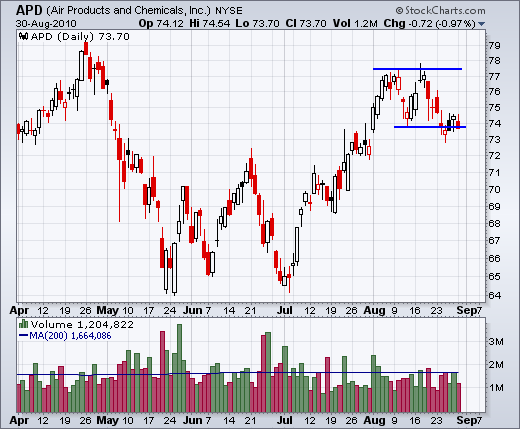
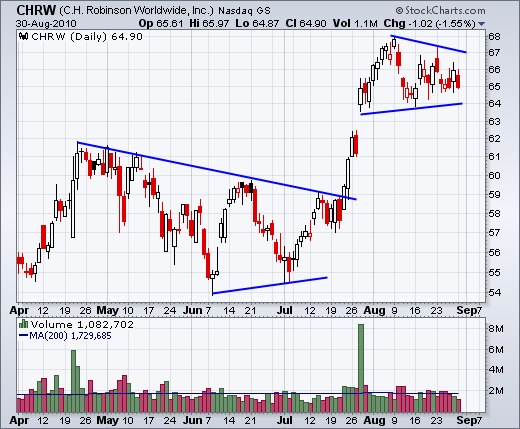
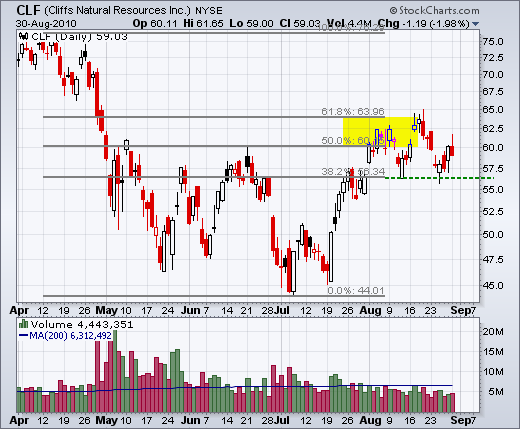
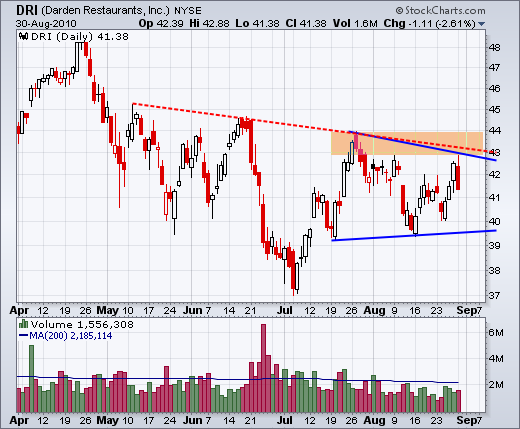
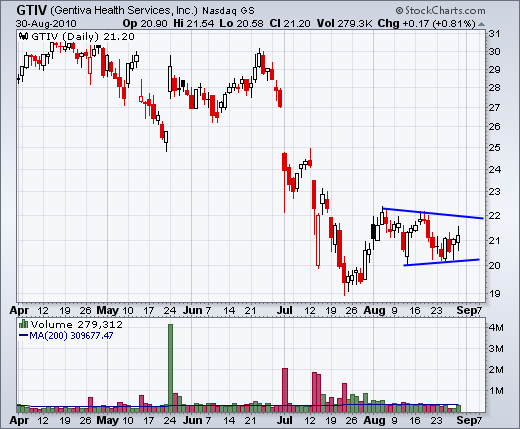
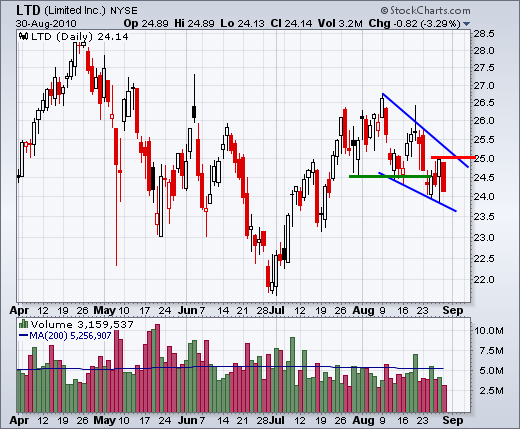
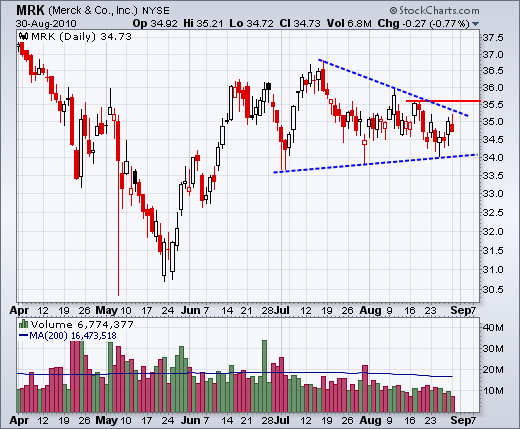
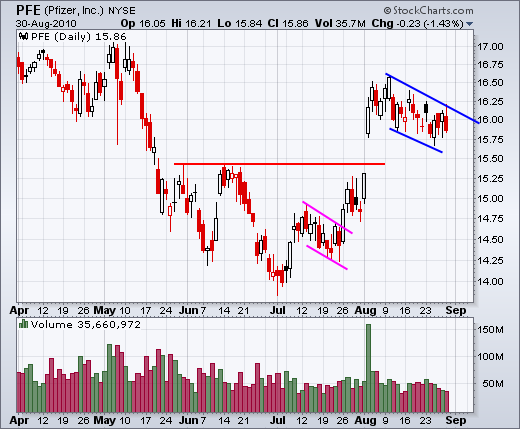
This commentary and charts-of-interest are designed to stimulate thinking. This analysis is not a recommendation to buy, sell, hold or sell short any security (stock ETF or otherwise). We all need to think for ourselves when it comes to trading our own accounts. First, it is the only way to really learn. Second, we are the only ones responsible for our decisions. Think of these charts as food for further analysis. Before making a trade, it is important to have a plan. Plan the trade and trade the plan. Among other things, this includes setting a trigger level, a target area and a stop-loss level. It is also important to plan for three possible price movements: advance, decline or sideways. Have a plan for all three scenarios BEFORE making the trade. Consider possible holding times. And finally, look at overall market conditions and sector/industry performance.

About the author:
Arthur Hill, CMT, is the Chief Technical Strategist at TrendInvestorPro.com. Focusing predominantly on US equities and ETFs, his systematic approach of identifying trend, finding signals within the trend, and setting key price levels has made him an esteemed market technician. Arthur has written articles for numerous financial publications including Barrons and Stocks & Commodities Magazine. In addition to his Chartered Market Technician (CMT) designation, he holds an MBA from the Cass Business School at City University in London.
Learn More




